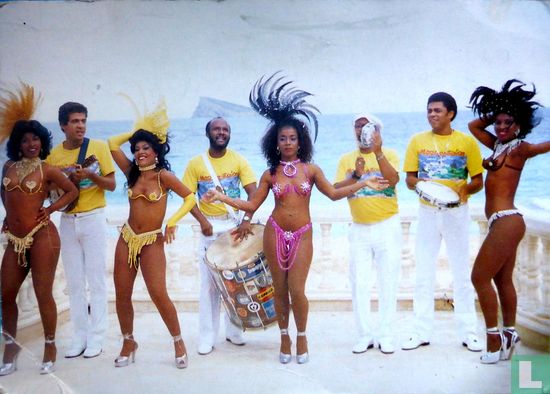Enlarge image
Brazilian Carnival, Cena Espectaculo
Catalogue information
LastDodo number
4697751
Area
Postcards
Title
Brazilian Carnival, Cena Espectaculo
City
Street
Province / region
Year
Collection / set
Number on postcard
N° 007427
Designer
Publisher as on card
General name of the publisher
Dimensions
18.0 x 13.0 cm
Printing technique
Details
On Card ;
Brazilian Carnival
Exclusiva de L'aiguera palas
Actuacion diara cena espectaculo
The Carnival of Brazil (Portuguese: Carnaval, IPA: [kaʁnaˈvaw]) is an annual festival held during the Friday to the Tuesday before Ash Wednesday, which marks the beginning of Lent, the forty-day period before Easter. On certain days of Lent, Roman Catholics and some other Christians traditionally abstained from the consumption of meat and poultry, hence the term "carnival," from carnelevare, "to remove (literally, "raise") meat."[1] Carnival has roots in the pagan festival of Saturnalia, which, adapted to Catholicism became a farewell to well things in a season of religious discipline to practice repentance and prepare for Christ's death and resurrection.
Rhythm, participation, and costumes vary from one region of Brazil to another. In the southeastern cities of Rio de Janeiro, São Paulo and Vitória, huge organized parades are led by samba schools. Those official parades are meant to be watched by the public, while minor parades ("blocos") allowing public participation can be found in other cities. The northeastern cities of Recife, Olinda, Salvador and Porto Seguro have organized groups parading through streets, and public interacts directly with them. This carnival is also influenced by African-Brazilian culture. It's a six-day party where crowds follow the trios elétricos through the city streets, dancing and singing. Also in northeast, Olinda carnival features unique characteristics, heavily influenced by local folklore and cultural manifestations, such as Frevo and Maracatu.

